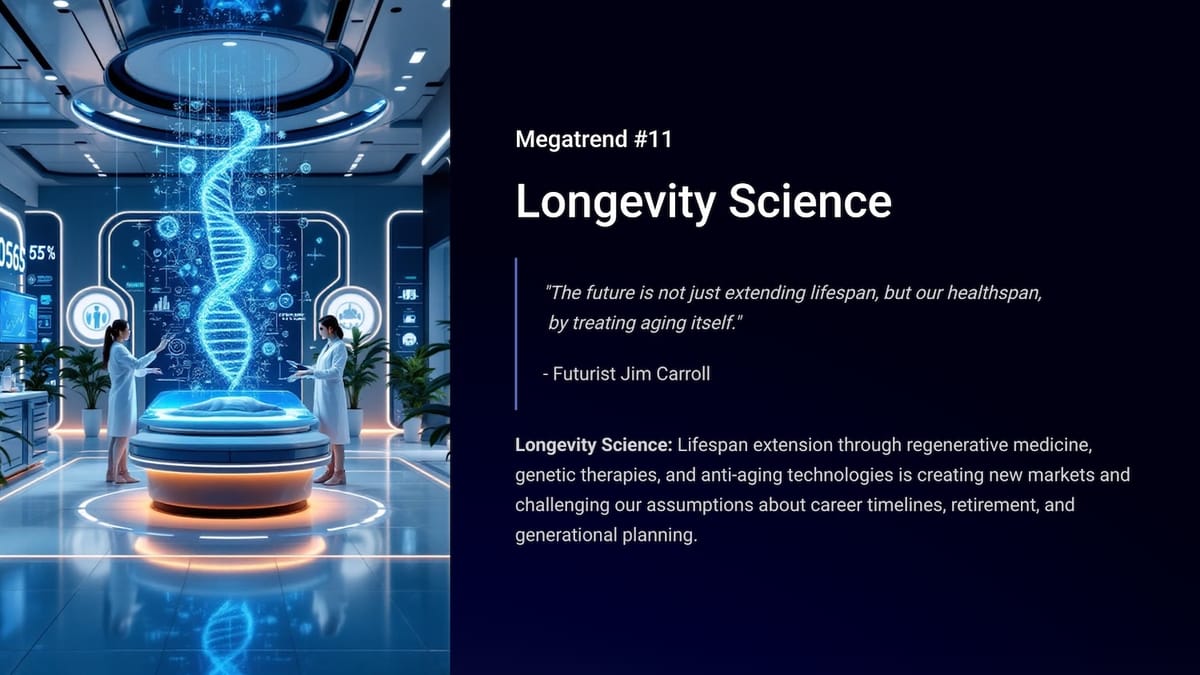"The future is not just extending lifespan, but our healthspan, by treating aging itself." - Futurist Jim Carroll
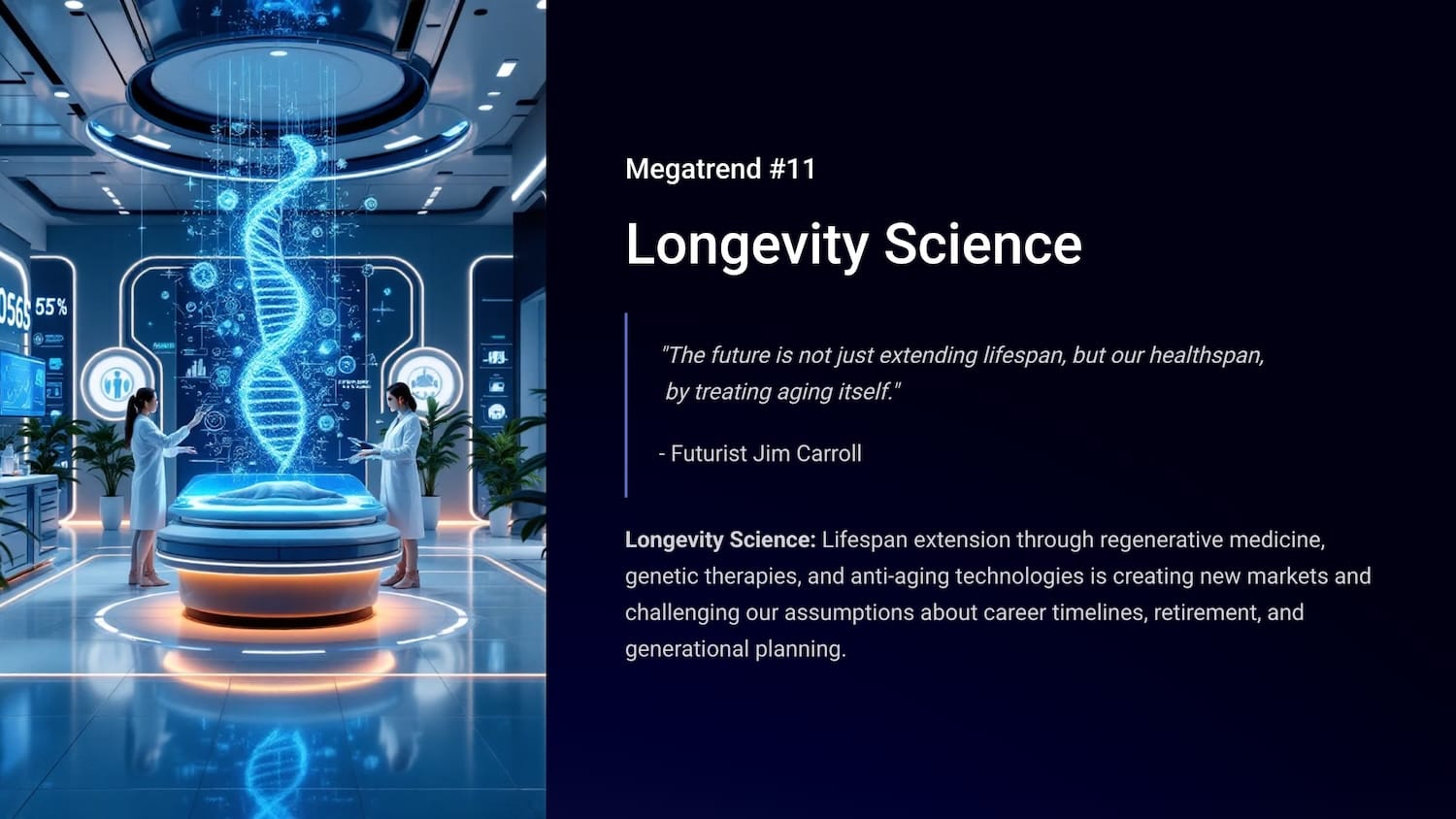
(Futurist Jim Carroll is writing a series on 30 Megatrends, which he first outlined in his book Dancing in the Rain: How Bold Leaders Grow Stronger in Stormy Times. The trends were shared in the book as a way of demonstrating that, despite any period of economic volatility, there is always long-term opportunity to be found. The book is now in print - learn more at dancing.jimcarroll.com)
Nobody wants to get old. Everybody will. The age-old dilemma, if you pardon the pun.
But lifespan extension through regenerative medicine, genetic therapies, and anti-aging technologies is creating new markets and challenging our assumptions about career timelines, retirement, and generational planning. The dawn of a new era in the science of longevity is upon us, offering a comprehensive overview of the rapidly advancing field dedicated to understanding and extending human life. Read the full PDF report for more details.
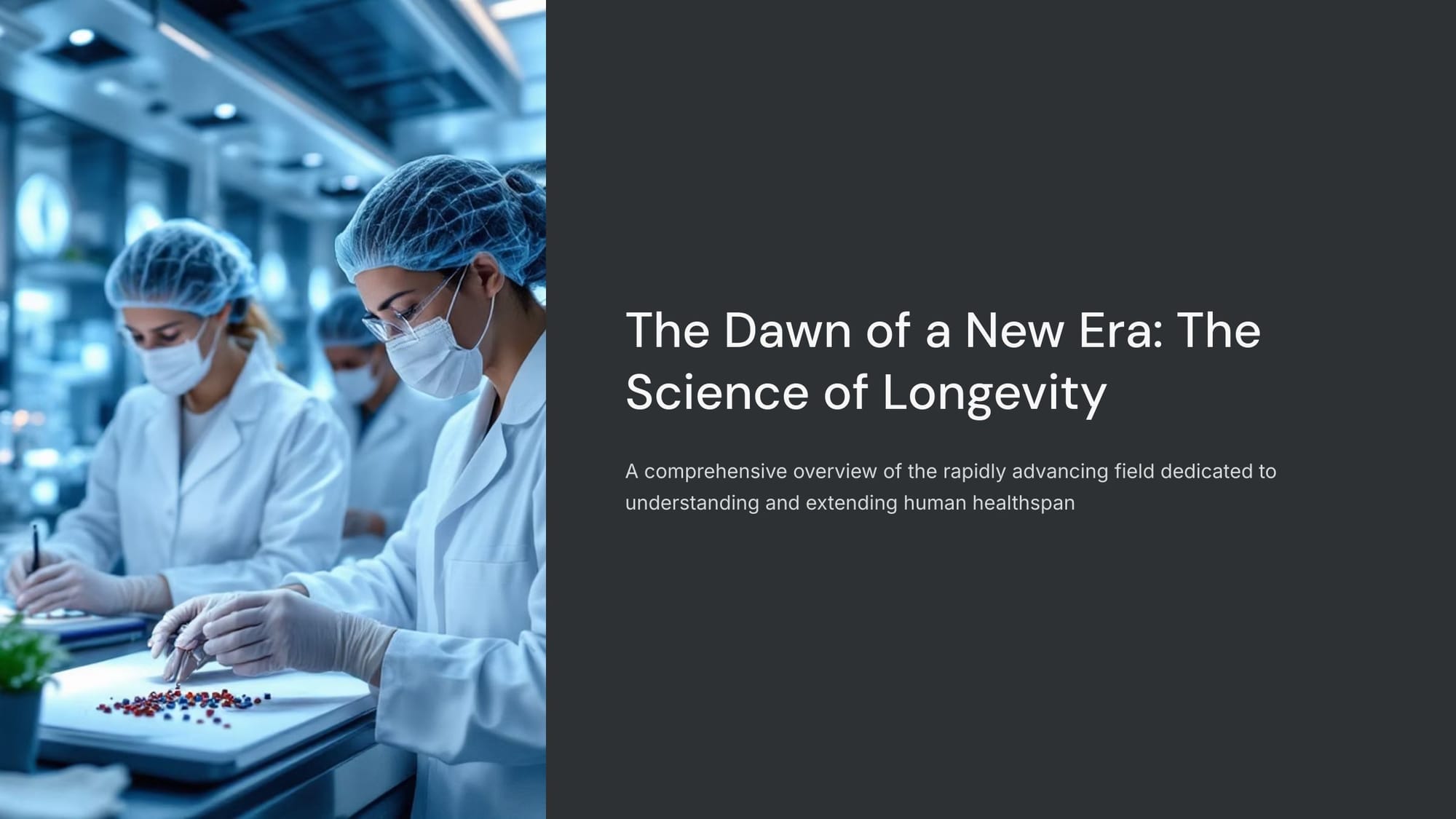
There's a lot of detail that follows, but it's worthwhile to dig into this in the context of megatrend thinking. Coming together all at once is a lot of science, technology (AI), venture capital money, big, bold thinking, and creative R&D passion. In that context, the focus of this science has fundamentally shifted from merely extending lifespan to enhancing **healthspan** — the period of life spent in good health, free from chronic disease and disability.
This paradigm shift recognizes that adding years to life has little value without maintaining quality of life and functional independence.

This new approach is built upon several key pillars of aging biology.
We're about to get into the weeds here, but stick with me.
The first pillar is Cellular Senescence. The challenge here is that "zombie cells" accumulate with age, releasing inflammatory proteins (SASP) that disrupt normal tissue function and contribute to age-related diseases. The scientific approach is the development of "senolytics" — drugs that selectively find and destroy these senescent cells, potentially rejuvenating tissues and mitigating disease. Given that the very essence of pharmaceutical development is accelerating, there's a lot of short-term promise with this trend.
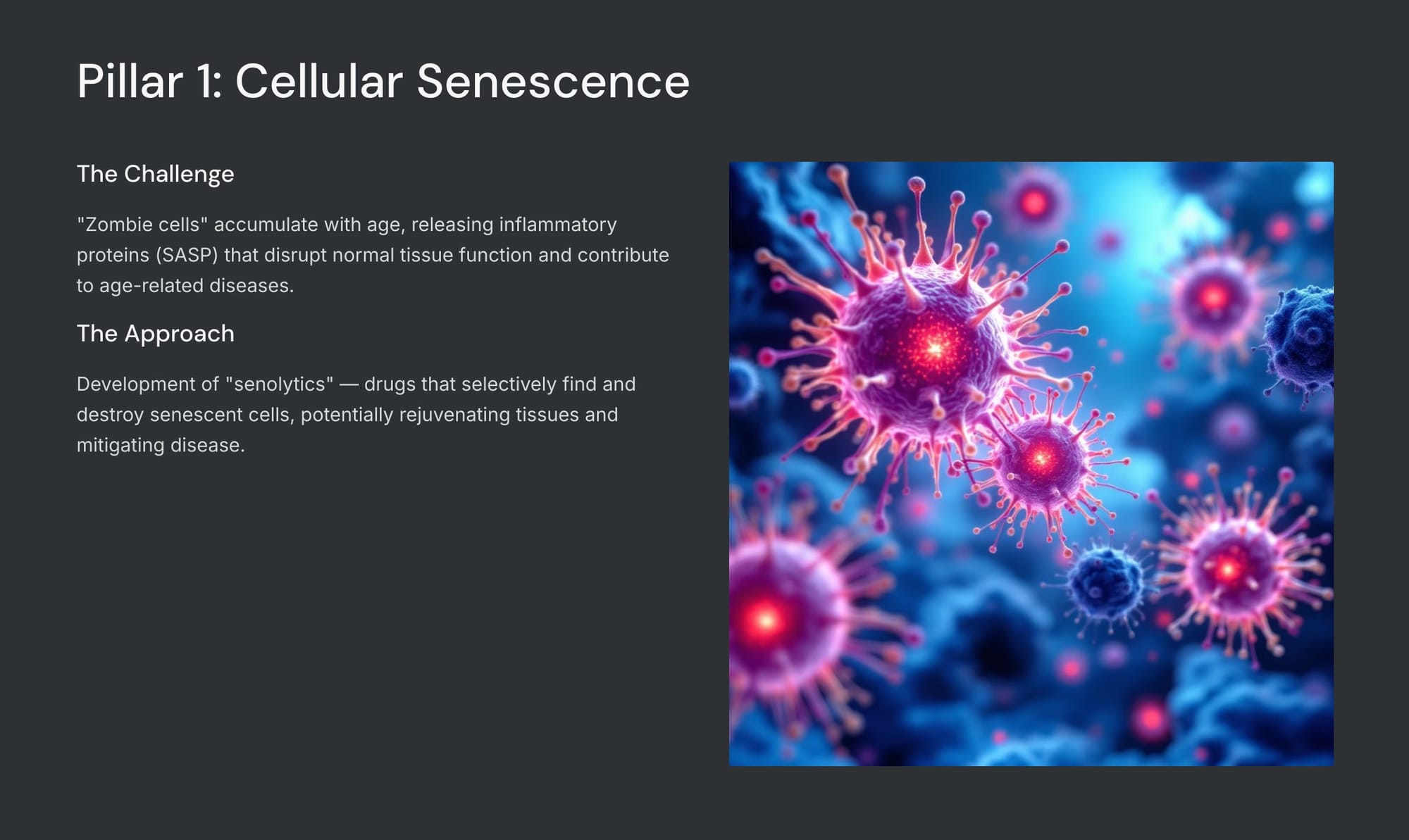
The second pillar is Epigenetic Reprogramming. The challenge is that the epigenome (chemical marks on DNA) accumulates errors with age, leading to a loss of youthful cell function and identity. The approach involves using Yamanaka factors to "reprogram" the epigenome back to a more youthful state, restoring function to aged cells without risking uncontrolled growth. This too is being accelerated by fast science, particularly with genomics.
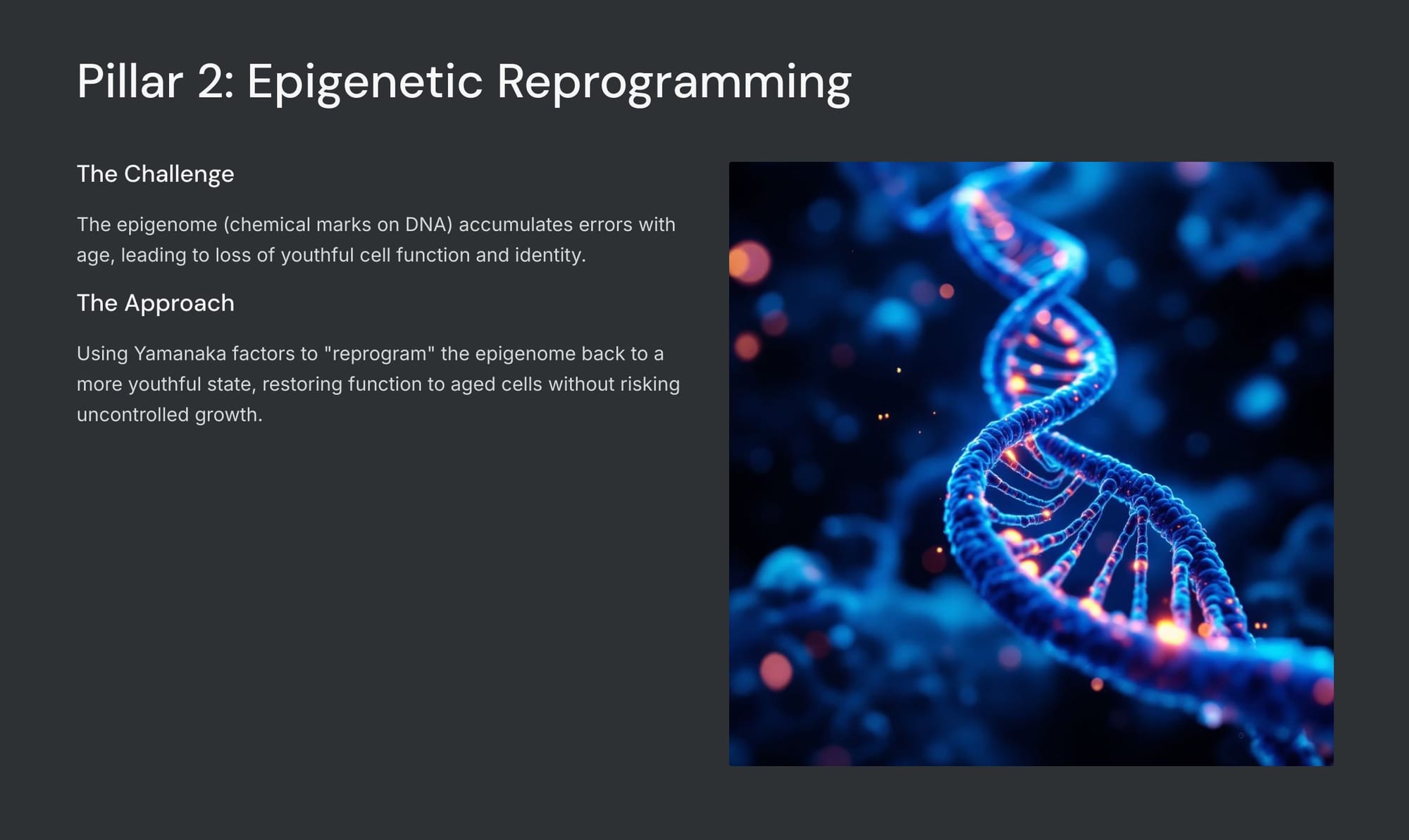
The third pillar concerns Telomere Biology. Here, the challenge is that telomeres (the protective caps at our chromosome ends) shorten with each cell division, eventually leading to senescence or cell death. The approach involves research on the telomerase enzyme to lengthen telomeres, potentially extending cellular lifespan while carefully avoiding cancer risks.
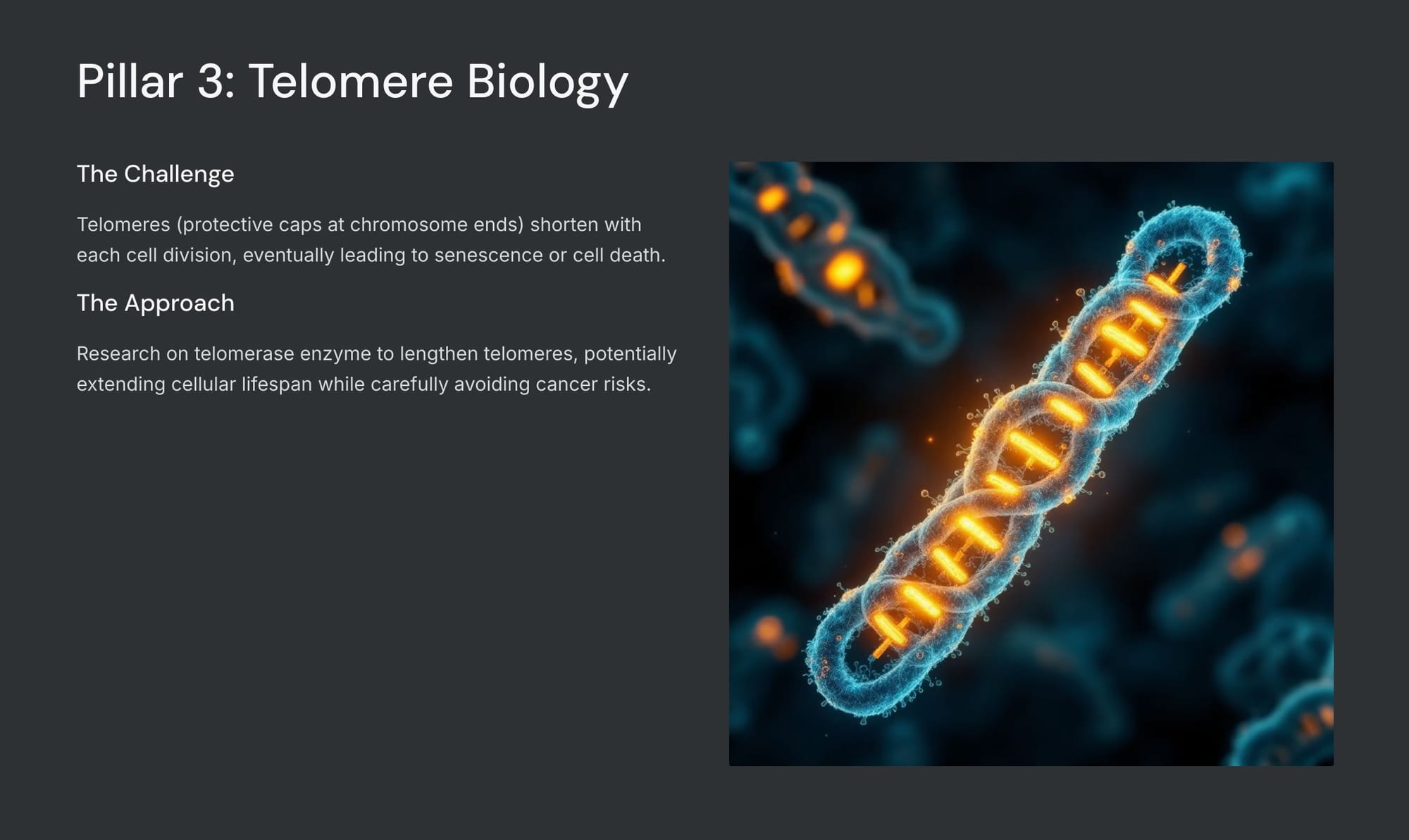
The fourth pillar focuses on Mitochondrial Health. The central challenge is that mitochondria, the powerhouses of our cells, become less efficient and more damaged with age, leading to reduced energy production and increased oxidative stress. The approach involves boosting mitochondrial biogenesis, improving their efficiency, and clearing damaged mitochondria through mitophagy to restore cellular energy production.
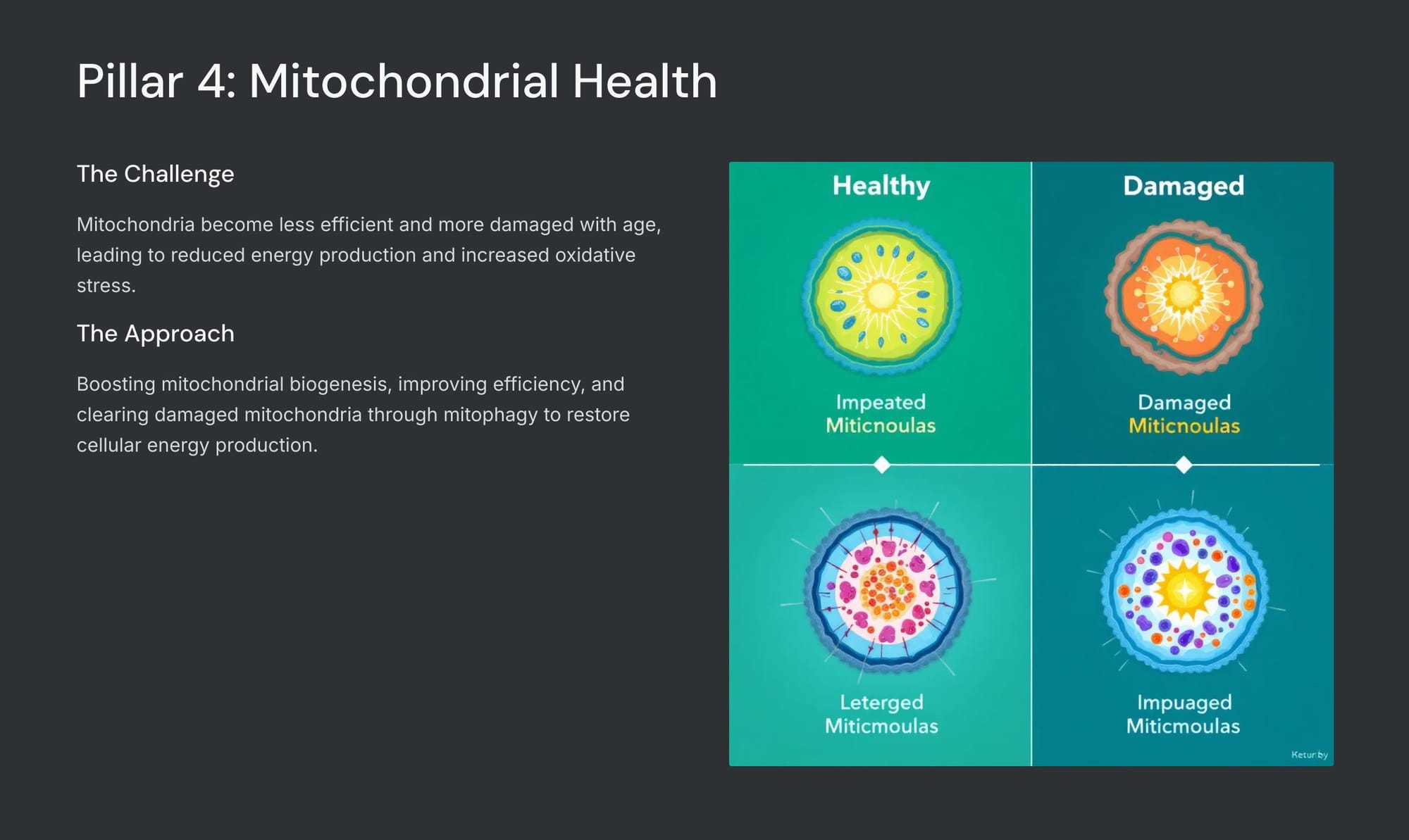
These theoretical pillars are rapidly translating into tangible scientific advances and breakthrough discoveries. Key areas of progress include enzyme restoration to rejuvenate aged cells, gene therapy to extend lifespan, powerful drug combinations with synergistic effects, and AI-driven research that is accelerating the entire discovery process.
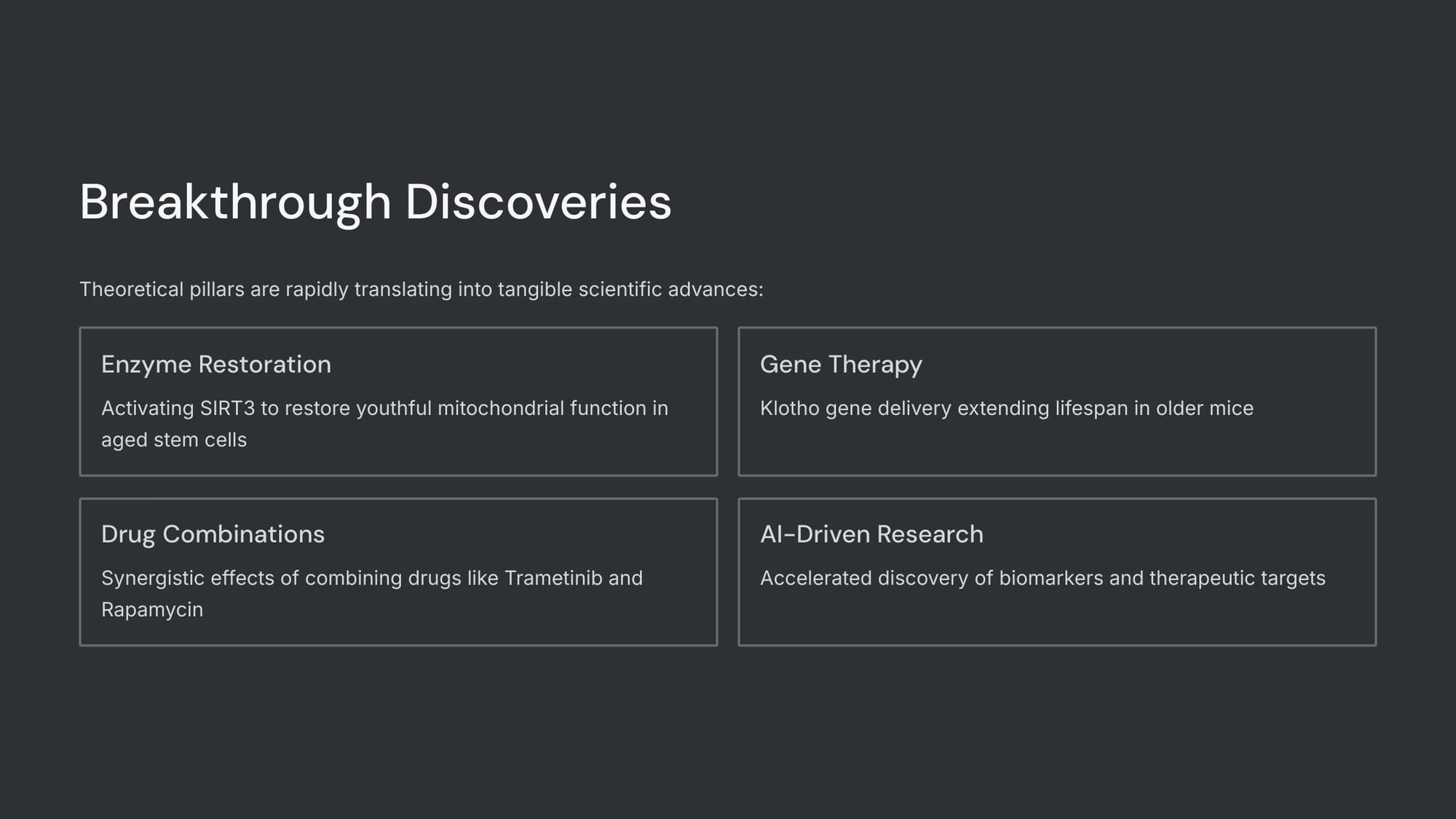
Delving into one of these breakthroughs, Cornell University researchers have developed a peptide that enables the delivery of a particular 'activator' to mitochondria. This remarkable development restores youthful function to mitochondria in aged hematopoietic (blood) stem cells, representing a significant step toward rejuvenating the blood and immune systems.
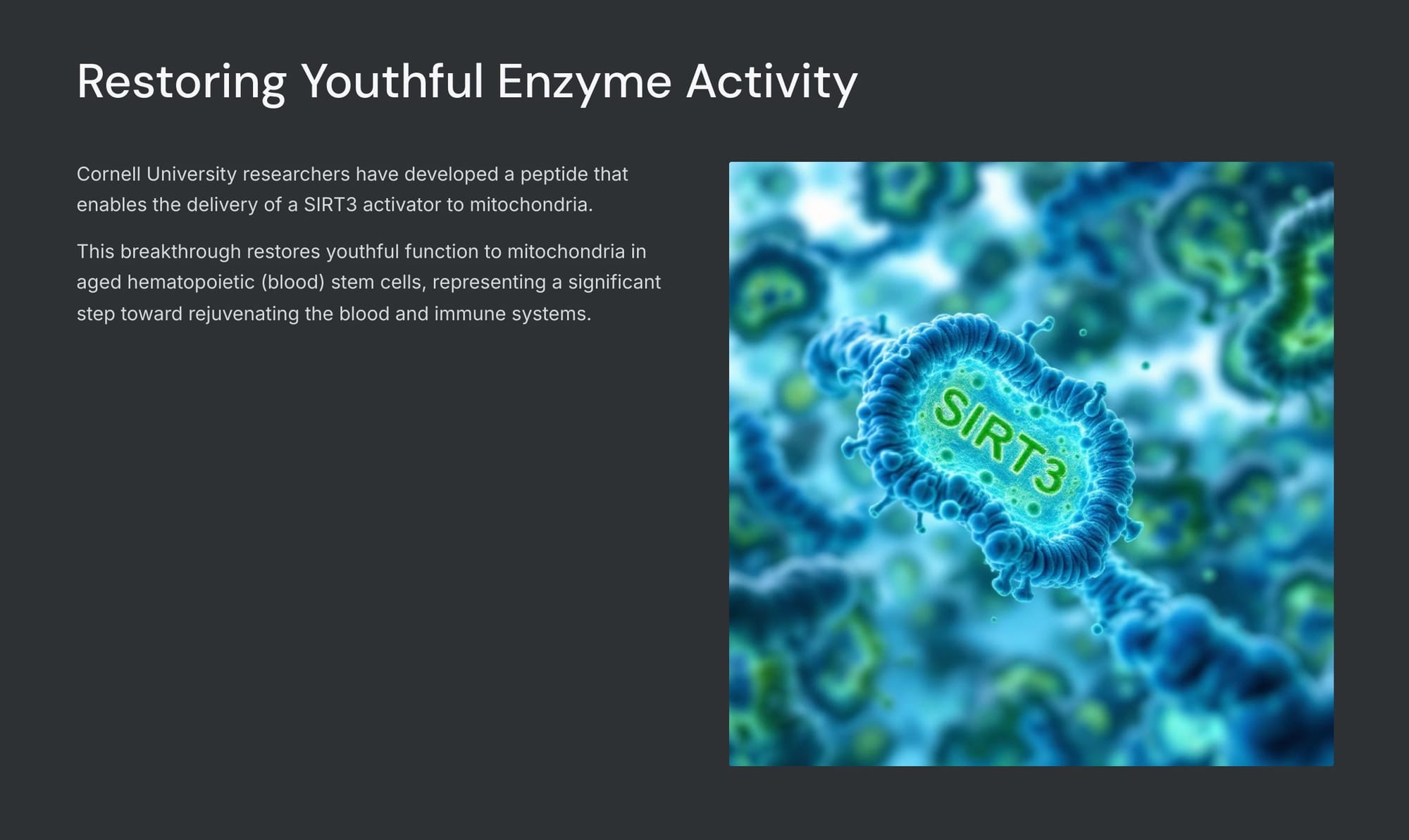
In the exciting field of gene therapy, the Klotho gene stands out as a powerful "longevity gene" whose expression naturally decreases with age. Researchers at the Yale School of Medicine have demonstrated that a single injection of a Klotho-gene-carrying virus, delivered to the brain or body, could extend the lifespan of older mice. This points toward the potential for gene therapy as a one-time treatment to combat multiple age-related deficits.
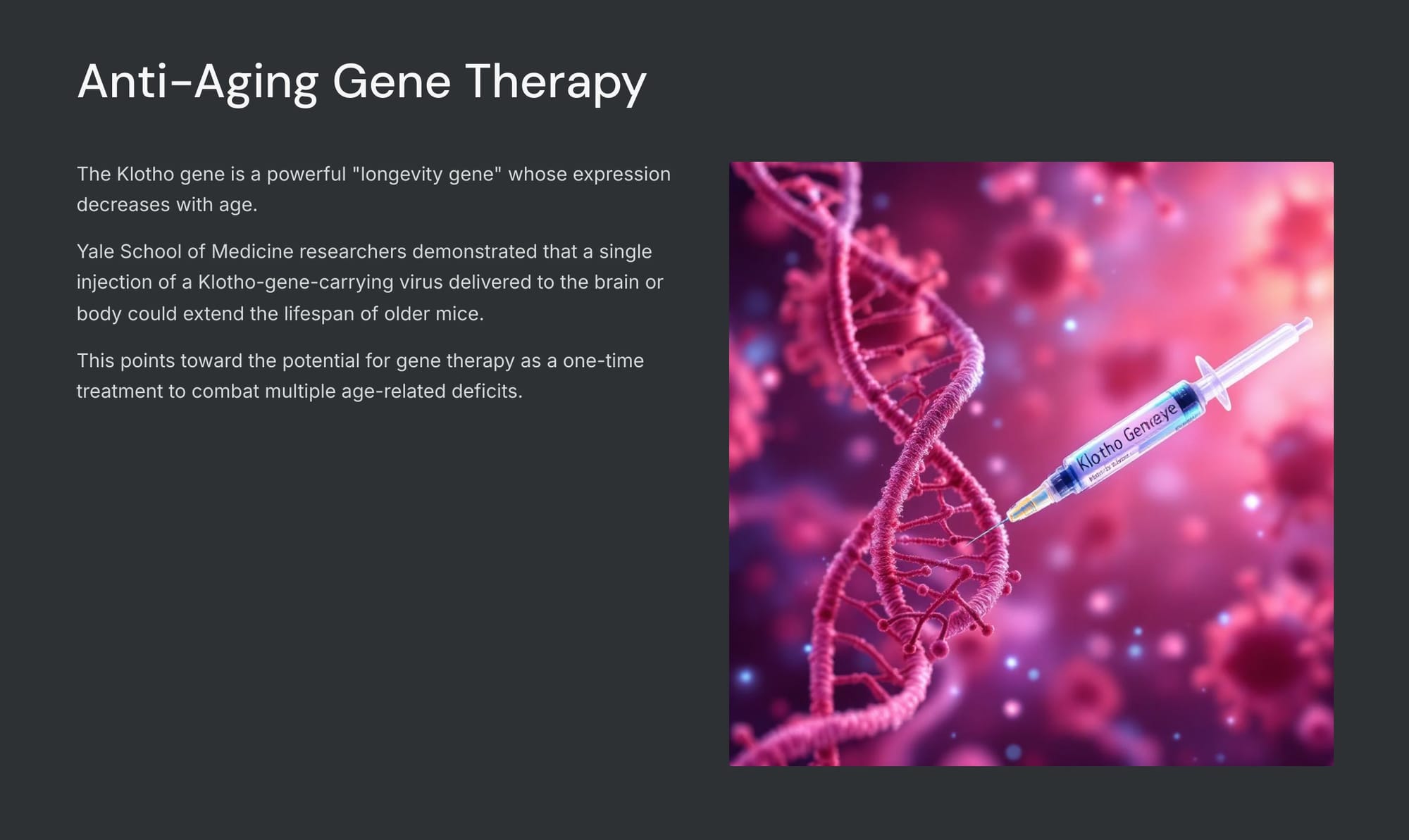
The strategy for therapeutic intervention is also becoming more sophisticated. While the traditional single-drug approach targets only one aging pathway at a time, limiting its effectiveness, new drug cocktail research is showing incredible promise. Studies have demonstrated that a combination of various drugs extends the lifespan of fruit flies. (Doesn't everything start with fruit flies?)
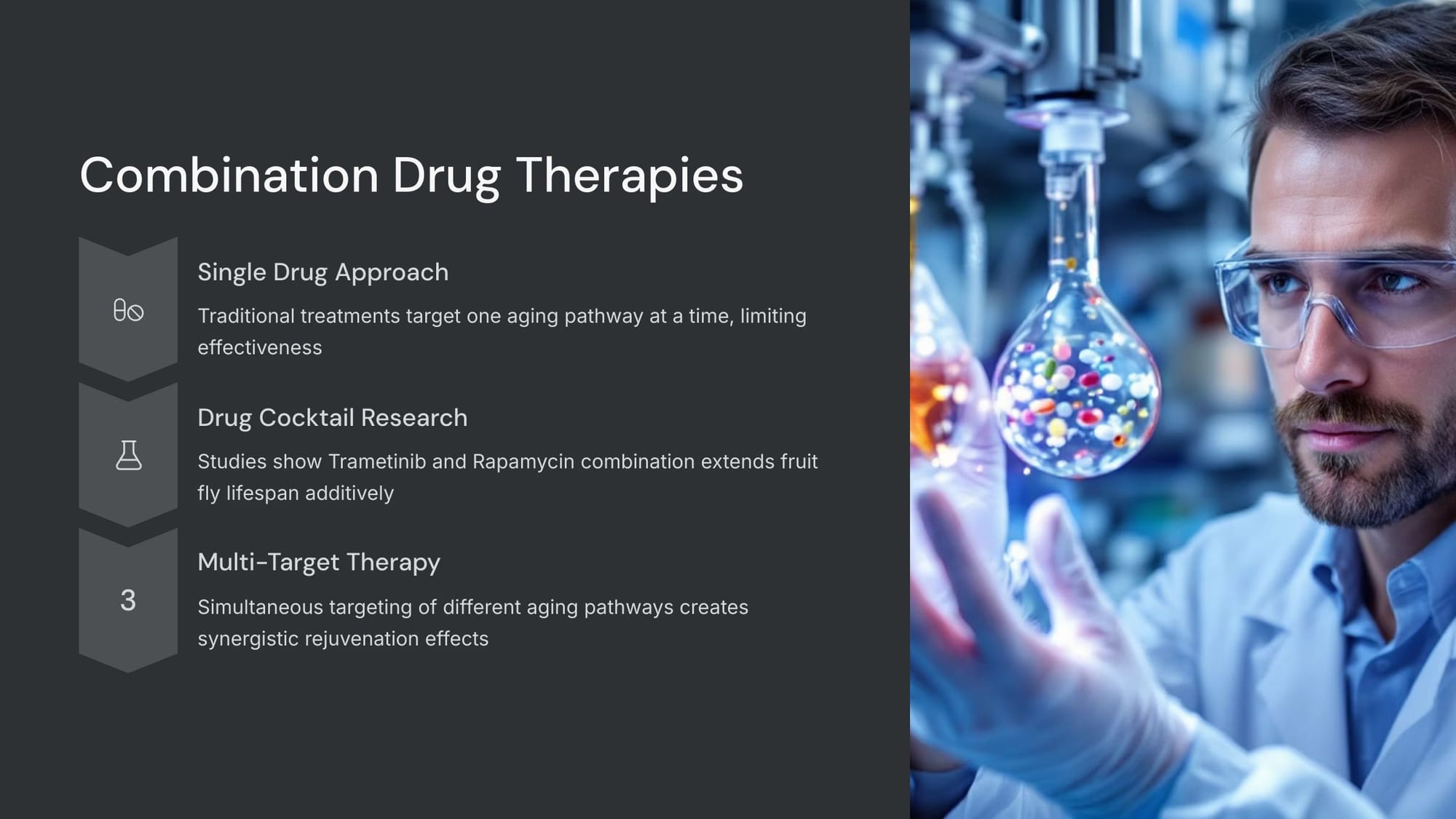
Underpinning much of this progress is technology. Artificial intelligence is dramatically accelerating longevity research by analyzing massive datasets to identify novel biomarkers of aging, predicting how molecules will interact with aging pathways, designing new drugs from scratch, and personalizing treatments based on individual profiles. This technology is becoming indispensable for discovering new therapeutic targets far faster than traditional methods.
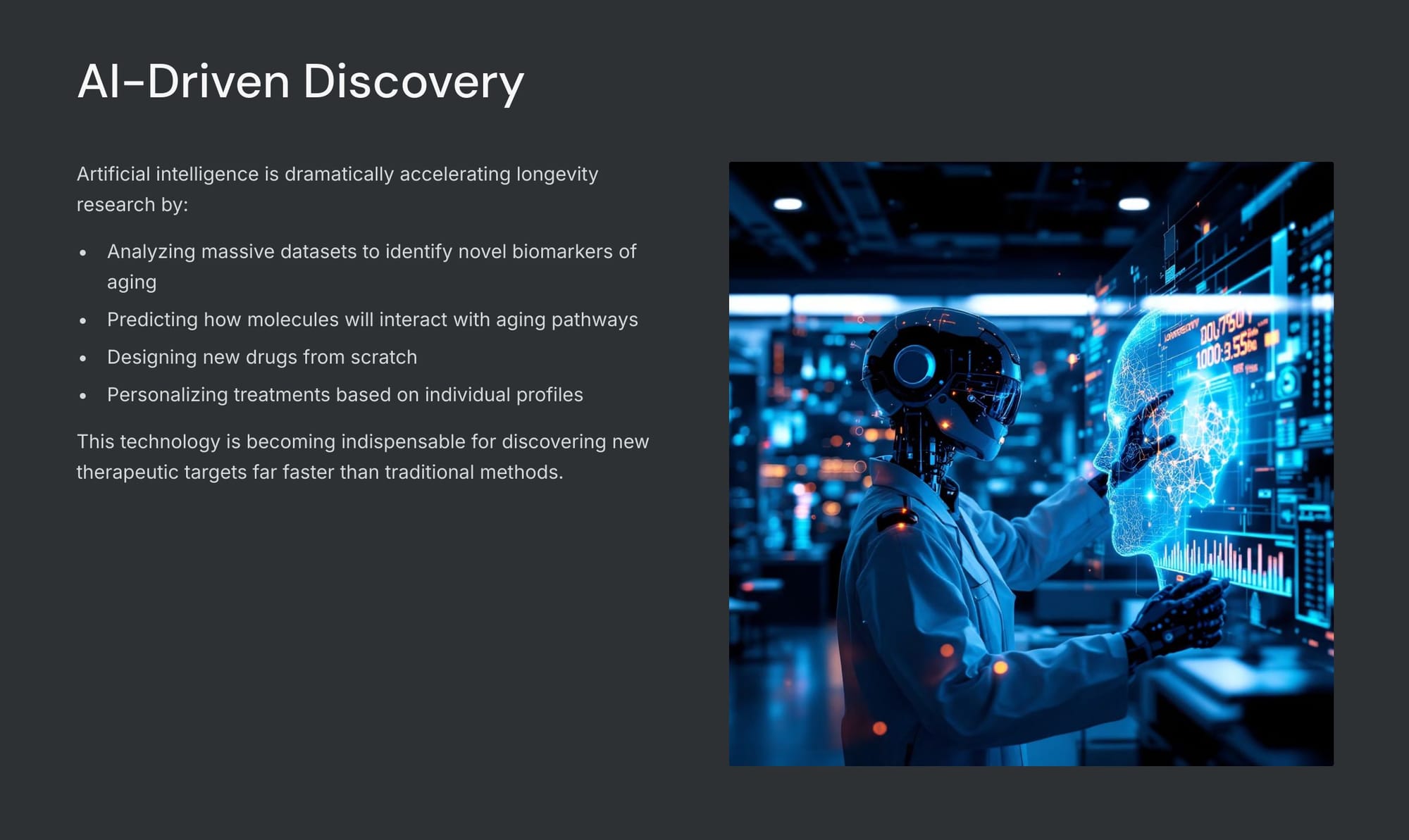
Of course, with all this science and technology comes an age-old debate. (Pardon the pun again.) The fixed ceiling perspective argues that human biology has a programmed limit, with data suggesting a plateau around 115-125 years - i.e. we will never get older than that. In contrast, the negligible senescence theory points to species like the Greenland shark or the immortal jellyfish, which show no age-related decline. This suggests that aging is a technical problem that can ultimately be solved.
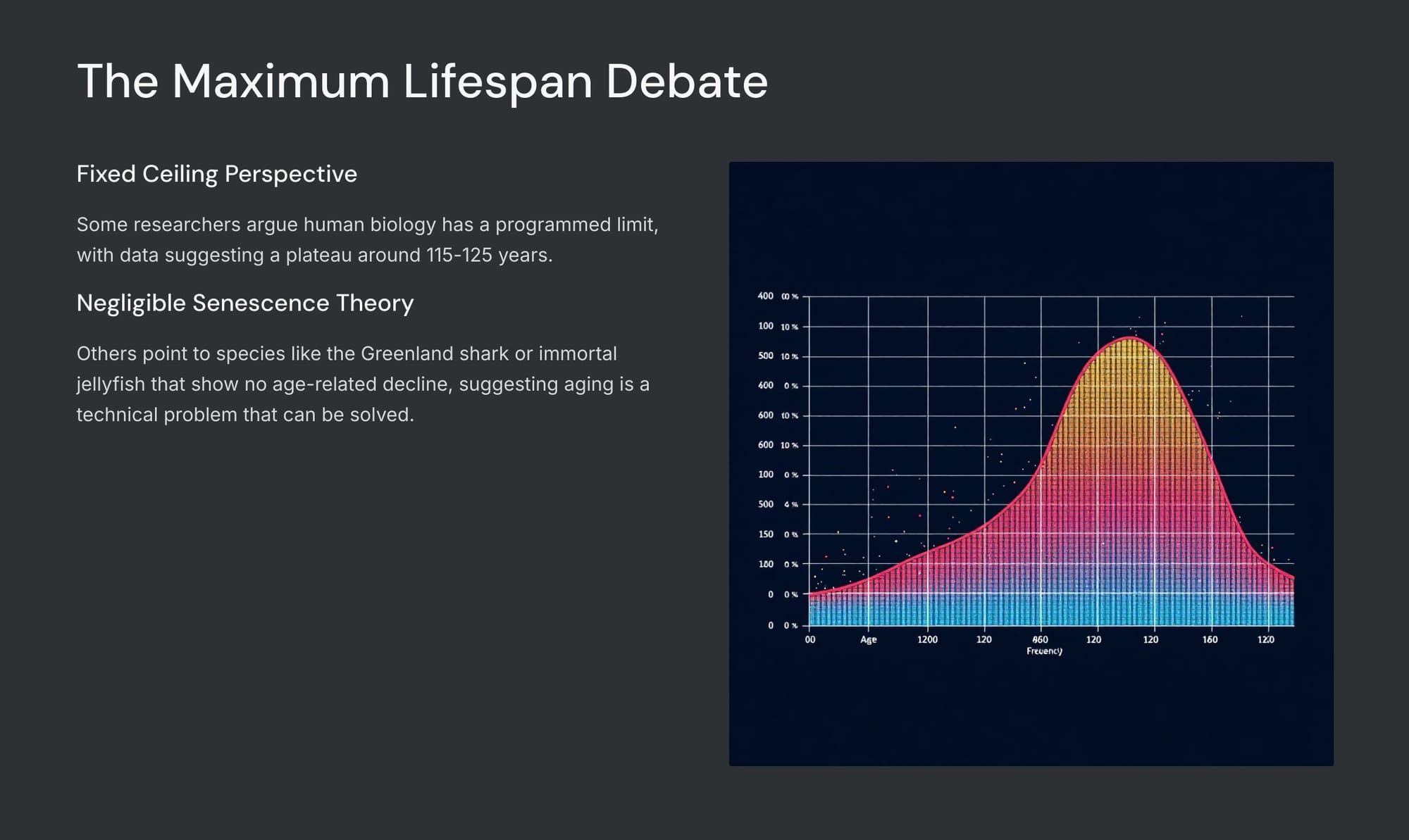
With all this comes some very complex issues, particularly with profound political and societal implications.
It could cause severe social systems strain, as institutions like pension and social security, designed for shorter lifespans, would require radical reform. Nations that lead in longevity science could gain a significant geopolitical advantage, creating new forms of global power imbalance. Furthermore, a major concern stems from access disparities; if these treatments are not available to all, the resulting "longevity divide" could become a major source of international tension.
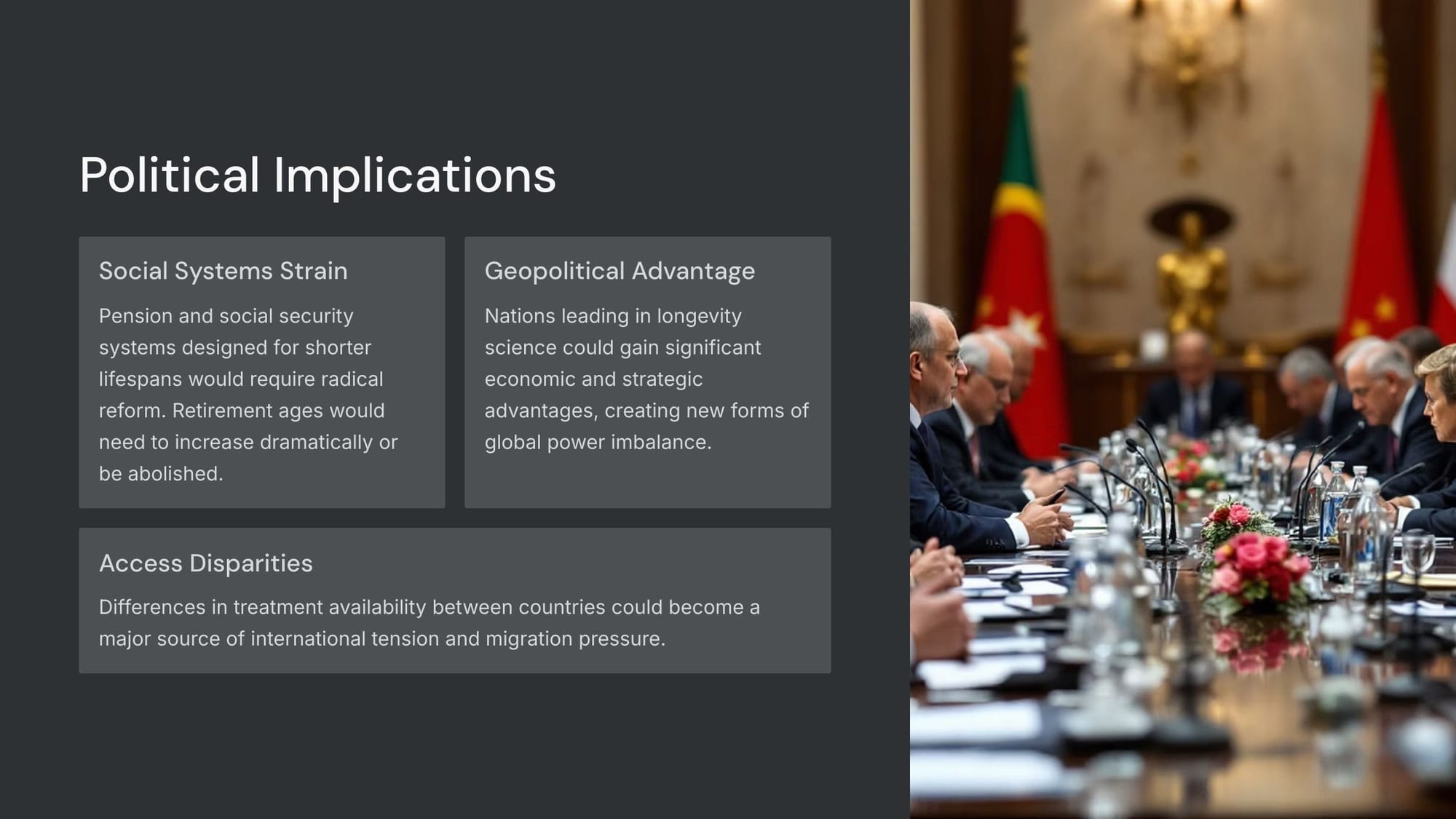
The economic implications would also be vast.
A healthier, older population that could remain productive for decades longer would cause a complete workforce transformation, changing workplace dynamics and potentially creating intergenerational competition for jobs.
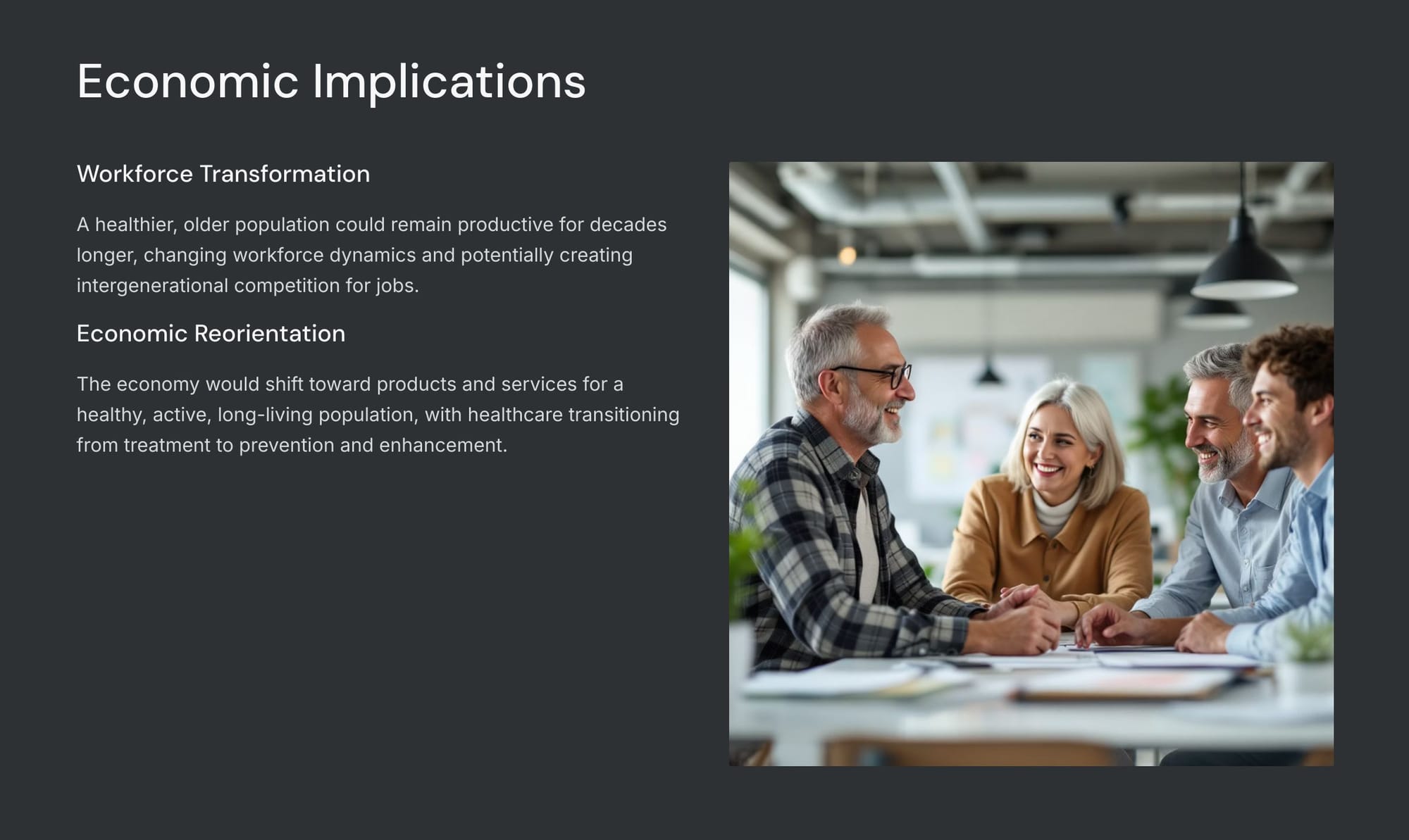
This would also trigger an economic reorientation, with the entire economy shifting toward products and services for a healthy, active, long-living population as healthcare itself transitions from a model of treatment to one of prevention and enhancement.
Overall, this is a very significant megatrend to watch, given how quickly it is moving but also given how our fascination with it will never age. (Sorry)
Futurist Jim Carroll is a big fan of the song by Queen, "Who Wants to Live Forever?"

